
Portrait of Joshua Winslow (1755) by John Singleton Copley
A letter in our archives, written almost exactly 250 years ago today, provides a personal account of events leading up to the famous Boston Tea Party, whose semiquincentennial will be widely celebrated next month. The letter is from Joshua Winslow, a merchant and member of an ancient Plymouth County family, to Jotham Gay, son of Hingham, Massachusetts, pastor Ebenezer Gay, and himself a merchant. In his November 18, 1773, letter to Gay, Winslow describes his appointment as one of six “consignees” authorized to receive (and pay the duty on) East India Company tea to be brought into the colonies under the newly enacted Tea Act of 1773; Boston’s resistance to the importation of that tea; and his growing sense that he might be heading “out of the frying pan and into the fire.” Winslow and Gay were in business together and good friends, their families linked by several marriages. When he wrote to Gay, Winslow had just returned to Massachusetts after a number of years in Cumberland, Nova Scotia. This is only one letter in a long-standing correspondence between Winslow and Gay, but it is both evocative and timely.
Winslow first provides a clear explanation of the economic and political factors at play as a result of the Tea Act:
[M]y time has been much engaged of late in a New Affair, which, whether it has reached you or not I can’t tell, but I have said just now something of my going out of the frying pan into the fire. This was meant to allude to a New Measure of the East India Company for introducing their teas into the several Governments in America at a lower Rate than ordinary, in order to prevent the vast Importation of Dutch Teas, which, as they do not pay the duty, are sold at a lower rate than that from England, by which means the India Company’s Teas have been accumulating upon their hands & the great door for vending the same into the Colonies in a manner Shut up. By the Interest of my Friends I was appointed one of the Companies Agents in Boston, & if the thing is Effected, it will afford a handsome commission. But the Country seems to be all up in arms again, & as great a Commotion at last is made about it, as there was about the Stamp Act–nay, they seem to carry opposition much higher than they did then. All the provinces seem determined that it shall never be landed in America . . . .
Even if being sold directly from the East India Company, the tea remained subject to taxation under the Townshend duties, and thus the Americans supporting the Patriot cause did not want this lower-priced tea landing in the colonies. The six consignees–Governor Thomas Hutchinson and two of his sons, Benjamin Faneuil, Richard Clarke, and Winslow–would be responsible for paying the duties before selling the tea on to New Englanders.
Winslow’s letter then turned to a description of some alarming events of November 3, 1773–what may be thought of as the opening chapter in the Tea Party story:
[T]o so great a height had [opposition to the East India Company tea] got in Boston, the beginning of this month, that I had an Express from my associate Mr. Faneuil on the evening of the 2nd Inst. to be in Town next day by 11 o Clock. I set out at Midnight and rode till 9 o Clock Next Morning. When I got to town I found the Flag up at Liberty Tree, & the inhabitants had been notified by hand bills Stuck up the day before to appear at the Tree at 12 o Clock that day to hear the Consignees resign their Commissions, & swear that they would return the Tea by the ships which brought it out. We met at Mr. Clark’s Store, who with the Governor’s Two Sons are the other Consignees & determined that we would not go. Whereupon a Committee of the whole house came down from the Tree thro: King Street (at about 1 o Clock) to Mr. Clark’s store, where Mollineux at the head of a number demanded of us to Resign our Commissions & swear that we would Return the Tea — &c &c. He was told we had no answer to make thereto, whereupon we were declared Enemies to the Country, & notified that we were to expect the Resentment of the People. Accordingly soon after he left the Store, an Attack began by breaking the Doors, Pelting Stones, Dirt, &c, upon those within and attempted to break in upon us, but having a number of resolute Friends we sustained the attack & after about one hour’s siege they marched off , the chief of them at least, & we being Reinforced by a number of Friends, quitted the Store . . . .
“Next day was pretty quiet,” Winslow continued,
but a Town Meeting was ordered for the day following — Which met accordingly but it being 5th Nov: and no small intimations of another attack that night under the sanction of its being Pope’s Night, I not being desirous of another Amusement of that Nature ordered my Chaise & left Town — nor have I been there since.
(Pope Night, a New England descendant of England’s Guy Fawkes Day, was a raucous and sometimes violent celebration; a consignee of English tea might reasonably be concerned about additional trouble.)
Back in Marshfield, Winslow expanded on his frustration:
There have been other Meetings since for the same purpose & one attack upon Mr. Clark’s House, but as the Tea is not yet arrived and until it is we are in Manner Ignorant of the Nature of the Instructions which may accompany it. We cannot resign in Honor or Conscience; for this we are abused and stigmatized as Enemies of the Country & what not — but I need not enlarge as you will see the proceedings in the Publick Prints.
He closed on a somewhat hopeful note:
How the matter will end must be left to time. Meanwhile, I don’t intend to go to Town again until [the tea] arrives, when perhaps there may be such Instructions therewith as may make our own way Clear, either to Resign or to Accommodate matters in such a manner as may prove Satisfactory to the People.
We can’t be accused of a spoiler if we suggest that Winslow’s optimism was misplaced. In his next letter to Gay, dated January 3, 1774 (also in our archives), he recounts what has become one of the most familiar stories of the Revolution:
Whether you have received my former letter or not, it is most probable you have heard by the way of Halifax of the violent lengths to which they have proceeded in Boston, with the Tea ship’t by the India Company to that port. That when it arrived in that Harbour the people Seized upon it, & put a guard on board the Several Ships to prevent it being landed, with a determination that it should be returned from whence it came. That the Agents, apprehensive of further ill treatment from the People, retired to the Castle for the safety of their persons sometime about the beginning of December, where they yet remain. That the People finding the measure of returning the Tea impracticable to be accomplished had destroyed all that came in these vessels, to the amount of 342 chests, by cutting them to pieces and turning the whole of it into the Dock. whereby a Loss of about L16,000 must fall upon some body or other.

 Hingham native Oliver L. (“Morg”) Ferris (1918-1985) served in the Army Air Corps as an airplane mechanic stationed in Hawaii and Guam, achieving the rank of Sergeant. He was a married man when he entered the service; while he was abroad, his wife, Margaret (“Rita”) Ferris, lived with her parents, the Scanlans, in Dorchester. For Christmas 1944, Morg sent Rita and her parents an Army Air Corps Christmas card which he signed on the front: “With all my love, Morg.” The card, postmarked December 9, 1944, shows aircraft in formation flying out of clouds towards what looks like a Christmas star. Between border decorations of palm trees and holiday wreaths at the top and bottom, it includes an inspirational, mission-driven message: “That It Might Shine On.”
Hingham native Oliver L. (“Morg”) Ferris (1918-1985) served in the Army Air Corps as an airplane mechanic stationed in Hawaii and Guam, achieving the rank of Sergeant. He was a married man when he entered the service; while he was abroad, his wife, Margaret (“Rita”) Ferris, lived with her parents, the Scanlans, in Dorchester. For Christmas 1944, Morg sent Rita and her parents an Army Air Corps Christmas card which he signed on the front: “With all my love, Morg.” The card, postmarked December 9, 1944, shows aircraft in formation flying out of clouds towards what looks like a Christmas star. Between border decorations of palm trees and holiday wreaths at the top and bottom, it includes an inspirational, mission-driven message: “That It Might Shine On.” Air Corps, but his choice of Christmas card could not have been more different! Richard served in the National Guard from 1939 to 1940 and, from 1941 to 1945, with the Army Air Corps as a member of the 3rd Bomber Group, which took the nickname “The Grim Reapers.”
Air Corps, but his choice of Christmas card could not have been more different! Richard served in the National Guard from 1939 to 1940 and, from 1941 to 1945, with the Army Air Corps as a member of the 3rd Bomber Group, which took the nickname “The Grim Reapers.”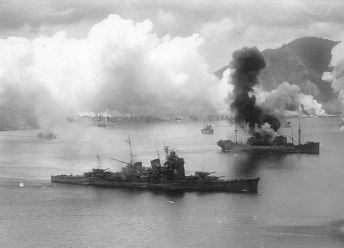 While the card is undated and bears no postmark, the context suggests it may have been sent for Christmas 1943, when the Third Bomber Group was indeed very “busy” with aerial bombing of New Guinea, as the allies fought a lengthy campaign to win New Guinea, which had been invaded by the Japanese in 1942. (Shown here: the 3rd Bomber Group attacks Japanese ships in Simpson Harbor, New Guinea, Nov. 2, 1943. Photo courtesy of the
While the card is undated and bears no postmark, the context suggests it may have been sent for Christmas 1943, when the Third Bomber Group was indeed very “busy” with aerial bombing of New Guinea, as the allies fought a lengthy campaign to win New Guinea, which had been invaded by the Japanese in 1942. (Shown here: the 3rd Bomber Group attacks Japanese ships in Simpson Harbor, New Guinea, Nov. 2, 1943. Photo courtesy of the  undated card, sent to Morg and Rita, riffs on exotic travel posters of the day, featuring a four-color picture of a G.I. drinking from a coconut shell or wooden bowl offered by a native woman, while a native man operates a well nearby. “All’s Well in the Philippines,” the card reassures the recipient (albeit with a very bad pun). Inside, Ed has carefully handwritten the names of various cities in the Philippines in a style suggestive of steamer trunk labels and wrote:
undated card, sent to Morg and Rita, riffs on exotic travel posters of the day, featuring a four-color picture of a G.I. drinking from a coconut shell or wooden bowl offered by a native woman, while a native man operates a well nearby. “All’s Well in the Philippines,” the card reassures the recipient (albeit with a very bad pun). Inside, Ed has carefully handwritten the names of various cities in the Philippines in a style suggestive of steamer trunk labels and wrote:




 The details of the ceremony can be found in
The details of the ceremony can be found in 










 Champlin was mustered out with the rest of the regiment on August 20, 1865, at Mount Pleasant, South Carolina.
Champlin was mustered out with the rest of the regiment on August 20, 1865, at Mount Pleasant, South Carolina. 





 After the war, Winslow and his family lived in Hanover, where he died at age 73 in 1904. His obituary mentioned his service with the Mass. 54th , his later active involvement with Hanover and Plymouth GAR posts, and his membership in Hanover’s Methodist Church. Winslow is buried in the Hanover Center Cemetery.
After the war, Winslow and his family lived in Hanover, where he died at age 73 in 1904. His obituary mentioned his service with the Mass. 54th , his later active involvement with Hanover and Plymouth GAR posts, and his membership in Hanover’s Methodist Church. Winslow is buried in the Hanover Center Cemetery.

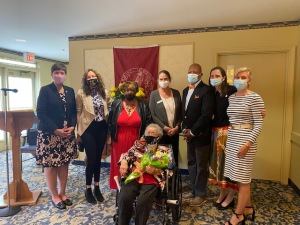




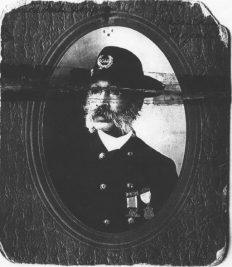



 One item on the agenda at the Hingham meeting in November was a resolution to censure northern Protestant churches which practiced segregation. It was on this subject that Douglass spoke that day.
One item on the agenda at the Hingham meeting in November was a resolution to censure northern Protestant churches which practiced segregation. It was on this subject that Douglass spoke that day.

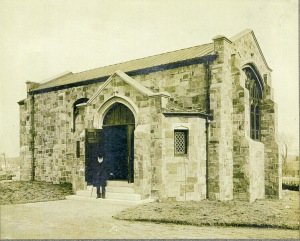
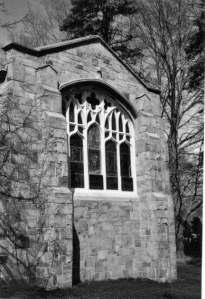

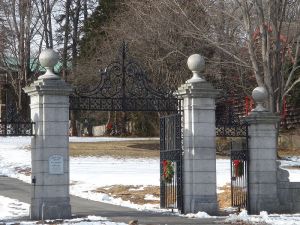

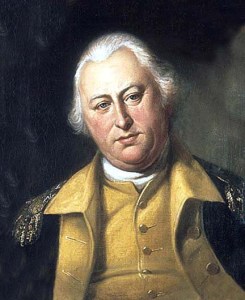 After recuperating from a wound suffered during the
After recuperating from a wound suffered during the 
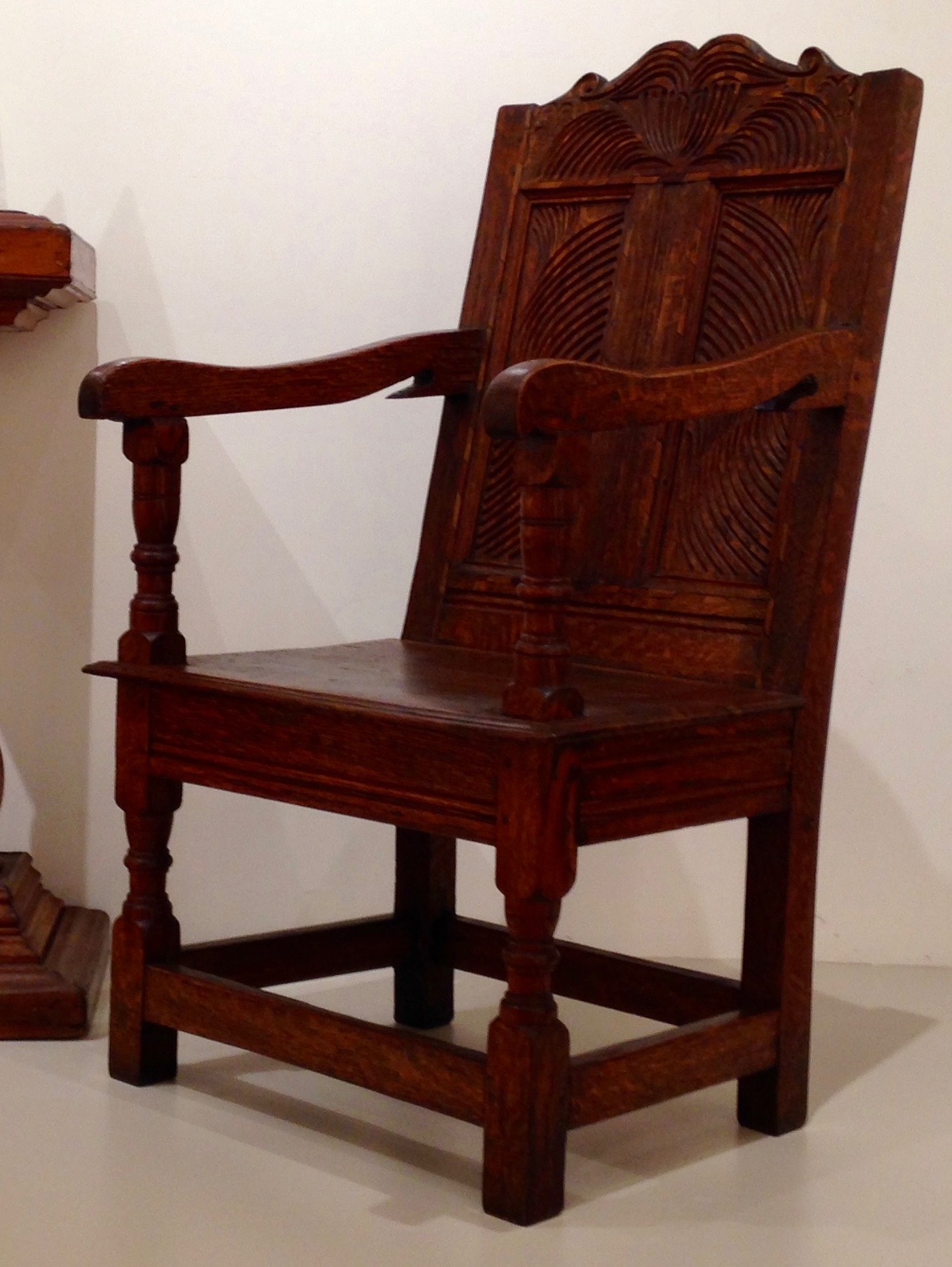 The chair was moved into
The chair was moved into